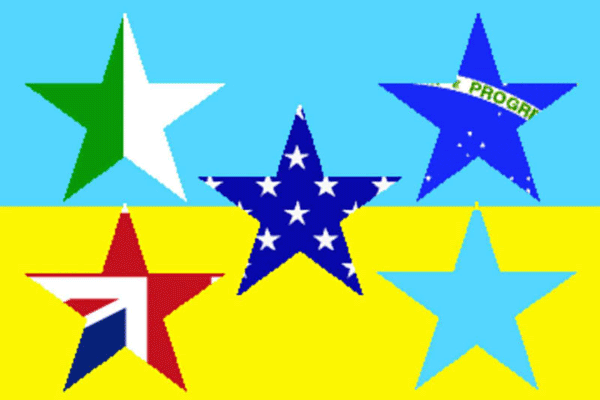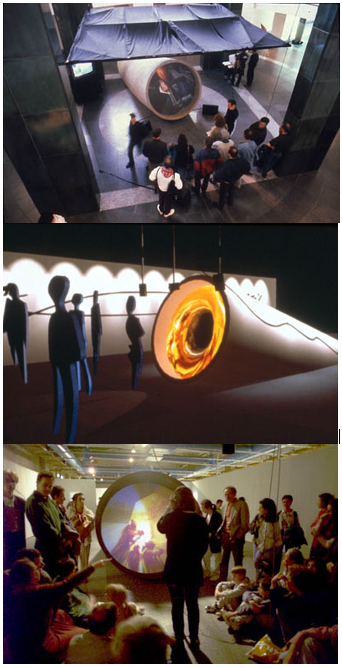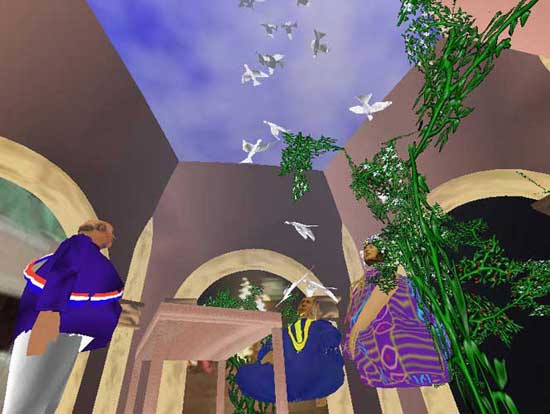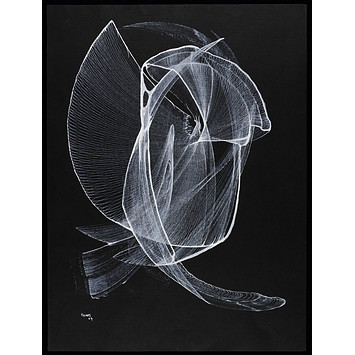Introduction
The development of technology led to the widespread of various gadgets and devices in all spheres of humans’ lives. Sometimes it becomes difficult to differentiate where virtual reality and real-life start. Is it good or bad? On one hand, technology helps people to work, communicate, collaborate, but sometimes it is quite frightening that people are devoted to the technological boom. Murray (2008, p. 16) articulates the concerns which digital art evokes in people but states that any change in artistic vision and performance raises many disputes and criticism.
The present exhibition will go further and reveal the concerns of people who cannot exist without technology but are afraid of being substituted by it. The theme of the exhibition can be enclosed in the following title: Building Virtual Path to Perfection: Where Can It Lead? These fears are still in the air, they are invisible, and, being a curator I will strive to reveal those concerns, since, as Youngman suggests (2009, p.30) the main goal of the curator to make the invisible things “visible”.
Curatorial Proposal Digital Arts
The opening artwork of the exhibition will be Net Flag (2002) by Mark Napier (Fig.1). This is a “Java applet”, a computer program that provides a certain interface for creating a visual object via Internet (Variable Media, 2010). This visual object is a flag with several stars. Any user can change the colors of stars or the flag itself pasting particular country flag colors. All changes are saved in the database and can be watched by other users.
At the exhibition, the visitor will observe a big screen and can have access to a mouse to participate in the interaction. In terms of this exhibition, this artwork will symbolize the vast possibilities of people to interact using contemporary technology. Of course, visitors will understand that far more than simple collaboration (changing colors) is possible due to the use of technology.

The next installation will show that the promised bigger collaboration is achieved by the use of technology. This is the work by Maurice Benayoun (in cooperation with Martin Matalon) The Tunnel Under the Atlantic (1995) (Fig.2). The installation is a huge cylinder (2m in diameter) which goes underground. It virtually connects two places in the world initially these were Montreal and Paris (Benayoun, 2010). The “Tunnel” at the present exhibition can unite London and New Delhi, for instance.
The visitors looking into the cylinder can see pictures from the history and contemporary life of the country on the other side. Moreover, they can communicate with each other surmounting huge areas that divide the two continents. In terms of the present exhibition, the artwork reveals the enormous potential in using technology which unites people and makes distance irrelevant.

The next installation will symbolize the same idea of no boundaries and endless interaction, but will also make visitors think whether the technology could substitute the real life, whether it has already absorbed us (Fig.3). This work is entitled the “Techno-Marriage” (1999) and created by Forest and Lavaud (in co-operation with Bruno Herbelin) (Web Net Museum, 2010). The artwork is a digital recreation of the marriage between Forest and Lavaud which took place in 1999 and many people could interact via the Internet (watching the ceremony, congratulating the couple, and commenting).
To exhibit this installation a big screen with good resolution will be necessary. The installation depicts the process of creation, what was happening in reality and what people (present at the ceremony and watching it online) could see. Some comments will also be provided in the film.

Another work presented at the exhibition will reveal the concerns of people who criticize using technology in art, claiming that no machine can make divine things which only a human being can create. Looking at this artwork the visitors will be able to see what exactly a machine can create, whether it is worth existing. Perhaps, some will praise such technological art and admit that machines can also create beauty, and others can condemn such kind of art.
Anyway, no one will stay distant. This is the work by Desmond Paul Henry created in 1964 (Fig.4). It is untitled but can be called a picture was drawn by a computer. The media is a mechanical pen, ink, and paper. The uniqueness of the drawing is that the machine was “operated electronically, but could not be programmed” (Victoria and Albert Museum, 2010).

Finally, the fifth installation to be presented at the exhibition is Ghostcatching (1999) by Downie, Eshka, and Kaiser (The open-ended Group, 2010). This astonishing artwork reveals the idea of collaboration not only between people but between people and technology (Fig.5). To exhibit the work it is necessary to install a big screen with a very good resolution. The installation is a reflection of a dancing man in a computer, virtual world.
Whereas it can seem that it is only a two-dimensional projection, it is something more. The music and exclamations of a dancer create an atmosphere of reality outside the screen, so the visitors will feel the collaboration between a human being on the screen, technology, and themselves. Of course, many questions will evoke in visitors’ minds, one of which: ‘Building Virtual Path to Perfection: Where Can It Lead?’

Thus, the present exhibition will take place in a gallery. There is no need in huge areas. Only one room has to be quite big to install The Tunnel Under the Atlantic. Even this installation will not occupy more than three-four square meters. Of course, each artwork should be presented in a different room or, at least, divided by curtain walls. Four installations require a big screen with good resolution, and a small laptop or PC.
Apart from this, the gallery should be equipped with the necessary technology for using the Internet which is essential for communication and collaboration. Each installation will have certain comments and/or instructions so that visitors can understand and participate in some artwork creation. Apart from this, it will be useful to start a database where the changes in the artworks will be stored, since storage of such data is extremely important for the development and history of art (Beyond productivity: information technology, innovation, and creativity, 2003, p. 182).
It can be useful to offer an audio guide for visitors. Thus, the visitors will be able to understand the aim of the exhibition, the vision of every artist, and, besides, will have the necessary instruction as for interactions. To develop/improve interactions between visitors and, perhaps, many other people it is possible to use some kind of social network, for instance, Twitter. It is also necessary that the gallery had its web site; otherwise, it could be beneficial to use an existing site or make a new one for the exhibition.
As far as visitors’ interactions are concerned, it is necessary to point out that everyone will be encouraged not only to observe but to take part and create something in real-time. First of all, visitors will be able to change the artwork (Net Flag or communicate with the help of the Tunnel). Thus, they will interact with each other and users of the Internet visiting the site of the exhibition or gallery.
Of course, the Tunnel will connect visitors to two different galleries, located on two different continents. Apart from this, the visitors will communicate with each other via social networks: they can comment on the works they see, invite their friends, and share opinions with others. Moreover, it can be a good idea to encourage the visitors to answer the questions raised by the exhibition about the role of technology, about their feelings about the role of technology in their lives, etc.
The visitors will be also welcome to express their opinion about the exhibition. Eventually, all this information will be processed and stored on the database and revealed on the website of the gallery or exhibition. Such kind of interaction will not distract people from the major of the exhibition but will underline it since technology will be excessively used for communication and collaboration. So, the visitors will be able to draw their conclusions on this disputable topic.
Reference List
Benayoun, 2010. The Tunnel Under the Atlantic. Web.
Youngman, P.A., 2009. We Are the Machine: The Computer, the Internet, and Information in Contemporary German Literature. Suffolk, UK: Boydell & Brewer Limited.
Murray, T., 2008. Digital Baroque: New Media Art and Cinematic Folds. Minneapolis, MN: U of Minnesota Press.
National Research Council (U.S.). Committee on Information Technology and Creativity, National Research Council (U.S.). Computer Science and Telecommunications Board, 2003. Beyond Productivity: Information Technology, Innovation, and Creativity. Washington: National Academies Press.
The OpenEnded Group, 2010. Ghostcatching. Web.
Variable Media, 2010. Mark Napier. Web.
Web Net Museum, 2010. Technomariage. Web.
Victoria and Albert Museum, 2010. Desmond Paul Henry. Web.